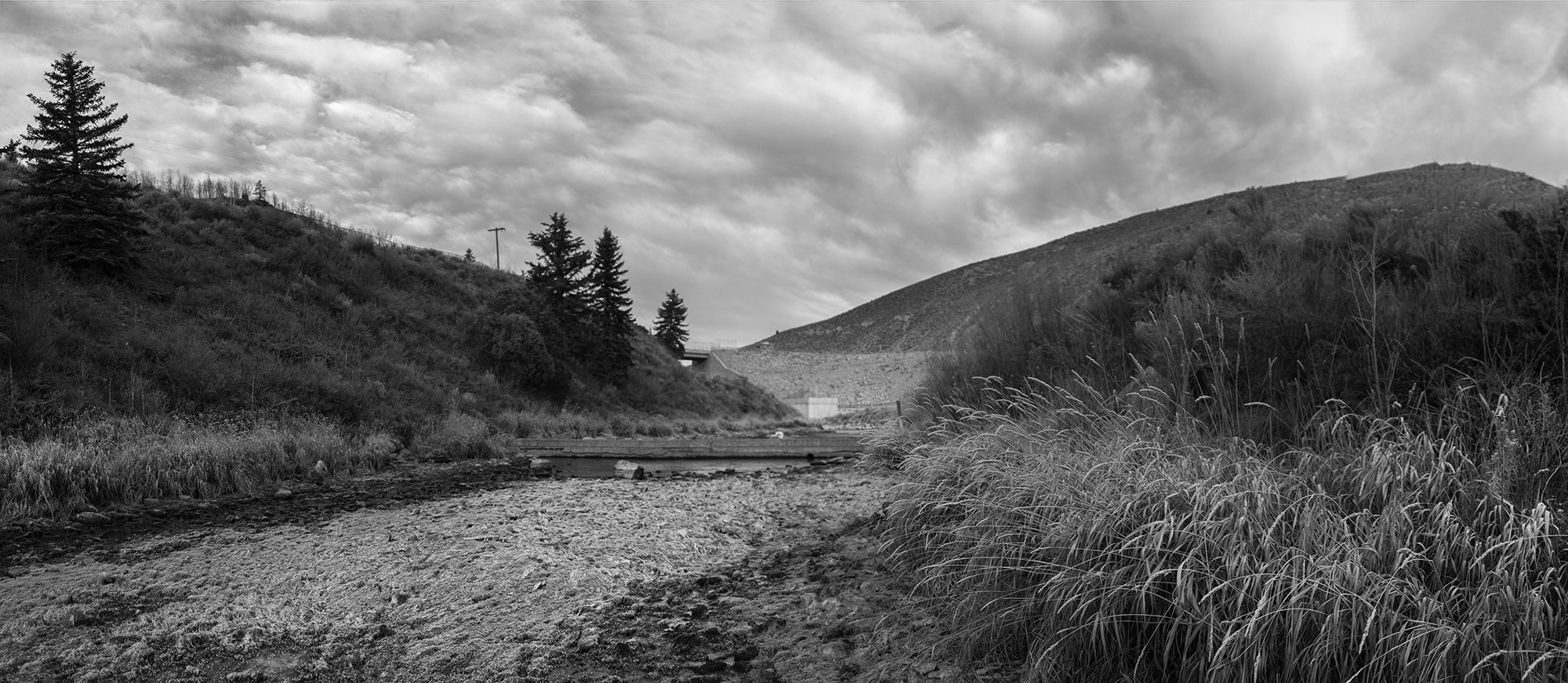














The Spanish Fork River has had its fair share of issues. Among them are Channelization, Pollution, and massive flooding. In the last 20 years, there has been a lot of development along the river bottoms in this system. The houses seen in this image have been built in the 100-year floodplain. The fact of the matter is although this is the “100-year” flood plain this area has seen massive floods twice in the last 100 years. Once in the 1950s and once again in 1983 where there are accounts of full large swaths of land breaking off and washing downstream. Although Utah is currently experiencing a historic drought the potential for future flooding is great.

The Division of Wildlife Resources used to have a deal with the land owners on this creek. The deal was for the land owners to allow angling access on their property and the DWR would help with restoration projects on the stream. In the late 90s, and early 2000s there were many access points and the river was considered a blue ribbon fishery with large brown trout. Over the last 20 years through a series of events access has been denied at many of the access points as a result so have the restoration projects. That combined with fires, floods, and mudslides this river is no longer the productive fishery it once was.

In 2006 the Division of Wildlife Resources treated the top 21 miles of this river with a chemical called Rotenone which is a chemical that is used to kill fish in water systems. The plan was to treat the top 21 miles of stream and apply the antidote to the bottom 10 miles of stream to remove nonnative species. The reason for doing this was to help recover our native cutthroat. The treatment worked well on the upper stretch but for years after the treatment, the bottom section failed to be a very productive fishery. Now 11 years after the treatment the river is starting to recover and fish seem to be more abundant.

Scofield was once a very productive trout fishery. It was regularly stoked with healthy rainbows and record-breaking Tiger trout have been caught here. Over the last 20 years, this reservoir has been heavily affected by the drought. Through several years of low water, the reservoir has experienced toxic algae blooms which resulted in large fish kills. The Division of Wildlife has been experimenting with different species to help make this a fishery that people would like to use again. Over the last several years they have planted Tiger Muskie, Wipers, Tiger trout, and Cutthroat trout. Only time will tell what this reservoir will become.

Lower Fish Creek was known to hold an abundance of big trout. It was a favorite for many Utah anglers. Unfortunately, the water district that runs the dam this river comes out of has at random times shut the water off leaving the river dewatered. over the last several years this has happened at different times. The water district is supposed to work with the Bureau of Reclamation and the DWR to come up with a shut-off plan so the water drops incrementally and the fish have time to find deeper water. But when they shut the water off suddenly the fish don't have a chance to find deeper holes and it results in large fish kills. Along with the random shut-offs in an attempt to save water for the spring the water district has completely shut the water off for the entire winter for several years and as a result, the river is nowhere as prolific as it once was.

Tibble Fork Reservoir lies in the mountains above American fork. In 2016 the dam needed to be brought up to code so they decided that they would increase the size of the reservoir to help meet future water needs. They built the new dam 15 feet taller and cleared sediment at the bottom of the reservoir to increase the capacity by 60%. While they were draining the reservoir to start work they released an enormous amount of sediment which adversely affected the fish population in the American fork river. The construction project on the dam was very disruptive to the local ecosystem.

Utah lake is a favorite place for a lot of boaters and fishermen. Although the lake has a history of issues with pollution and invasive species. Demands for irrigation and drinking water in the communities that surround the lake often pull much of the water from the tributaries that feed Utah lake. This means that a significant amount of water never makes it to the lake. Over the last 20 years being terrible drought years Utah lake has been at or near record lows at several different times This has made it difficult to boat at times in the already extremely shallow lake. It has also created an environment that is very conducive to toxic algae blooms, and E Coli outbreaks which have devastating effects on the ecosystem surrounding the lake and at times have closed the lake to all recreation.

Yuba reservoir has had a long history of problems. the main purpose of the reservoir serves as irrigation and flood control but it is a favorite place for many Utah boaters, and it is a great place for fishermen to target Northern pike. If you are not familiar with Northern pike they are fish that grow to enormous sizes and are voracious predators. Because the pike is such an amazing predator the ecosystem in the reservoir has reached a tipping point. The pike do not have enough food to support the population which has resulted in the pike turning to cannibalism. The pike in the reservoir now averages 30-50 inches in length. The reason for the mature average size is the fact that there is not enough food in the reservoir to sustain the pike population and they have started to eat the younger pike.